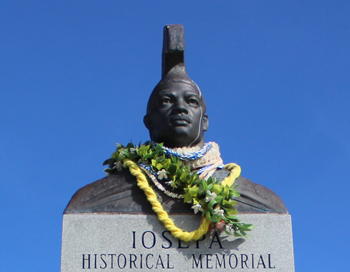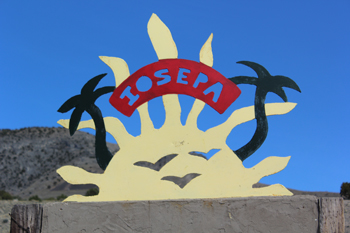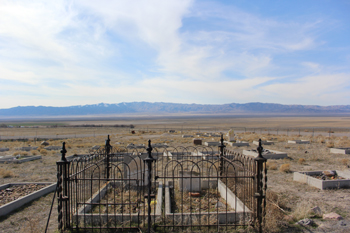This article may include affiliate links. If you click a link and make a purchase, Utah Outdoor Activities may receive a small commission at no extra cost to you. We only recommend products or services we personally use. FTC Affiliate Disclosure.
About 75 miles southwest of Salt Lake City lay the remnants of one of the state’s most unique ghost towns. Iosepa (pronounced Yo-see-pa) was named after Mormon founder Joseph Smith and a later church leader named Joseph F. Smith. Located in the desolate surroundings of Skull Valley, it’s hard to imagine the town was once home to immigrants from the lush islands of Polynesia.

Mormon missionaries first reached the Polynesian Islands in the 1850s. They baptized many of the locals and the new converts were eager to travel to the church’s home base in Salt Lake City. King Kalākaua of Hawaii banned any of the island’s residents from leaving, so the converts had to wait until the edict was lifted many years later.
Most of the Islanders began arriving in Utah in the late 1800s. And while they were excited to see their new home, the local reception was less warm than they likely expected. Many people feared that the Islanders carried dangerous diseases, while others had even more unsavory views of the newcomers.
To remedy the problem of the resulting culture clash, church leaders sought a spot to create a uniquely Hawaiian community. A scout party eventually decided Skull Valley was a suitable choice, and the first 46 settlers arrived during the summer of 1889. The first winter in Iosepa was brutal and many children succumbed to whooping cough.
The residents persevered, however, and began raising crops and livestock. Miles of irrigation canals helped to bring beauty to the stark surroundings. It seemed the town might actually thrive despite the daunting odds.

In 1911 the town won an award as “the most progressive city in Utah", and just six years later, the church decided to end the colonization experiment. President Joseph F. Smith instructed the residents to relocate to Hawaii to help build a temple in La’ie. Most of them obliged.
Very little remains of the town today. The cemetery, which was placed on the National Register of Historic Places in 1971, is a must-see. And scattered throughout the sagebrush you’ll find some building foundations.
The most fascinating site in Iosepa is also its most difficult to locate. Known as “Story Rock,” it’s a limestone slab covered with petroglyphs carved by some of the town’s original inhabitants. The carvings include an island scene with palm trees, a figure in a canoe, a sea turtle and other ocean creatures.
Some historians believe the carvings were used to teach the younger generation about the islands their parents had once called home. Others suggest that the carvings were merely the longings of homesick resident. Regardless of their origin, they are a fascinating addition to Utah’s vast collection of rock art.
Driving Directions:

From Salt Lake City travel west on I-80 towards Wendover. Travel past Grantsville, Utah to exit 77. Exit off of I-80 and travel south on SR196 (Skull Valley Rd.) heading toward Dugway Utah. The turn off to the springs is approx 9.8 miles. The road to the parking is well graded and passable by most vehicles.
If you are interested in seeing “Story Rock” in person, you’ll need to do some research. It’s a tricky spot to find and many people in the know are reluctant to reveal its exact location, fearing that an increase in visitors will lead to vandalism. But if you’re tenacious in your hunt, you may see one of our state’s most unique art galleries.
Other Information:
From Salt Lake City travel west on I-80 to exit 77. Travel South of UT-196 for approx 15.1 miles. A large sign will mark the dirt road that leads to the cemetery.
Other Articles of Interest:
Horseshoe Springs Skull Valley Utah
We hope you enjoyed this information. For more outdoor activities, please connect with us on YouTube, Facebook and Instagram. Help us keep this site up and running by visiting our online store which features outdoor themed gifts, decor and more. Thank you for visiting and for your ongoing support!